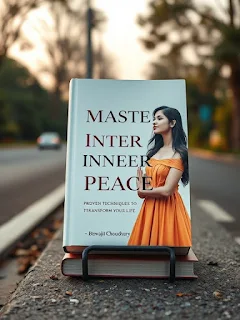Master Inner Peace: Proven Techniques to Transform Your Life
Master Inner Peace: Proven Techniques to Transform Your Life
Introduction
In the hustle and bustle of modern life, achieving inner peace may seem like an elusive goal. Yet, it is a critical element for mental clarity, emotional stability, and overall well-being. This guide will walk you through actionable steps, proven techniques, and practical strategies to cultivate lasting inner peace. By the end, you’ll have a toolkit to navigate life's challenges with calm and balance.
Understanding Inner Peace
Inner peace is more than just a fleeting feeling of calm. It’s a state of emotional and mental equilibrium that empowers you to remain composed in the face of adversity. Unlike happiness, which depends on external factors, inner peace stems from self-awareness and acceptance of the present moment.
Key Takeaway: Inner peace involves embracing challenges without letting them disrupt your emotional stability.
The Benefits of Inner Peace
- Reduced Stress: Manage stressful situations more effectively and improve overall health.
- Enhanced Mental Health: Decrease anxiety, depression, and emotional distress.
- Improved Relationships: Communicate with empathy and resolve conflicts calmly.
- Increased Productivity: A clear mind fosters creativity and efficient problem-solving.
Proven Techniques for Inner Peace
1. Mindfulness Practices
Engage in activities like meditation and mindful breathing to center your thoughts. Focus on the present moment to cultivate a sense of calm.
Example: Try a simple breathing exercise by inhaling for four counts, holding for four counts, and exhaling for four counts.
2. Emotional Resilience
Develop self-acceptance and practice positive affirmations daily. This builds mental toughness and helps you manage emotional turbulence.
3. Stress Management Tools
Incorporate time management strategies, physical exercise, and relaxation techniques to reduce stress effectively.
Common Pitfalls to Avoid
- Perfectionism: Inner peace is about progress, not perfection. Avoid pressuring yourself to be "perfectly peaceful."
- Overcommitting: Do not overwhelm yourself with too many activities in the name of self-care.
Comparison Table: Mindfulness, Meditation, and Journaling
| Technique | Purpose | How It Helps |
|---|---|---|
| Mindfulness | Focus on the present moment | Reduces stress and increases self-awareness |
| Meditation | Quiet the mind | Improves focus and emotional balance |
| Journaling | Express thoughts and emotions | Provides clarity and emotional release |
FAQs
1. Can you maintain inner peace during chaos?
Yes, inner peace equips you with the tools to face challenges without losing composure. Practices like mindfulness and emotional resilience are key.
2. How long does it take to achieve inner peace?
The journey is personal and varies for everyone. Regular practice of mindfulness and self-reflection accelerates the process.
Takeaways
Inner peace is achievable through consistent practice of mindfulness, emotional resilience, and effective stress management. By avoiding common pitfalls and focusing on simple, actionable steps, you can transform your mental and emotional well-being.
Start Your Journey: Commit to one technique this week and track its impact on your daily life.
Call-to-Action
Join our 7-Day Inner Peace Challenge to kickstart your journey towards tranquility and balance. Download our free guided meditation app or share your progress in the comments below.






Comments
Post a Comment